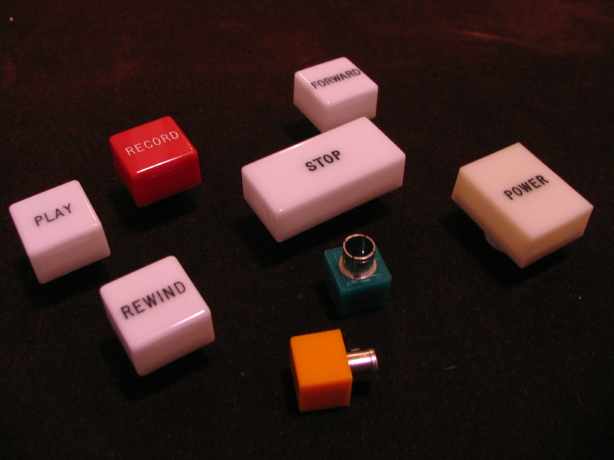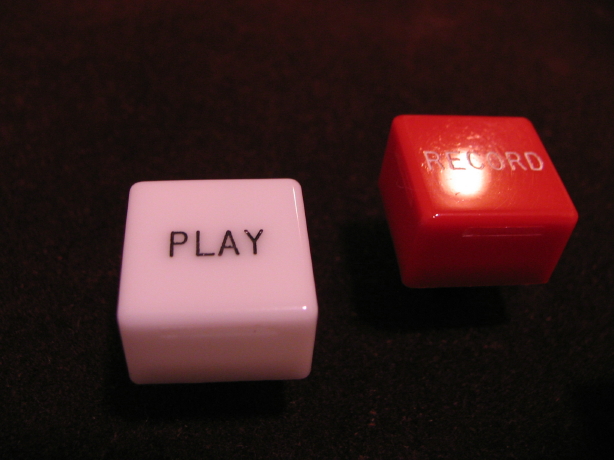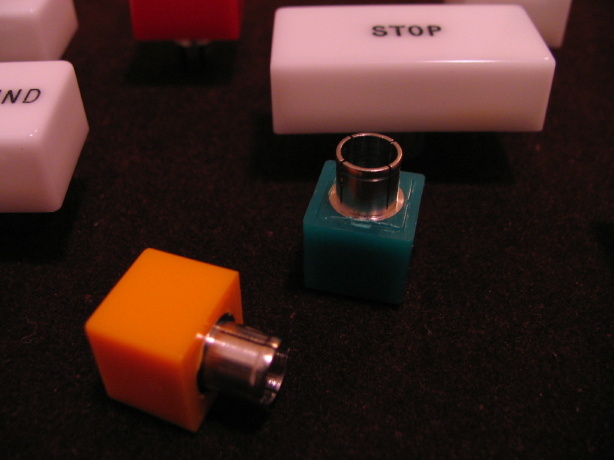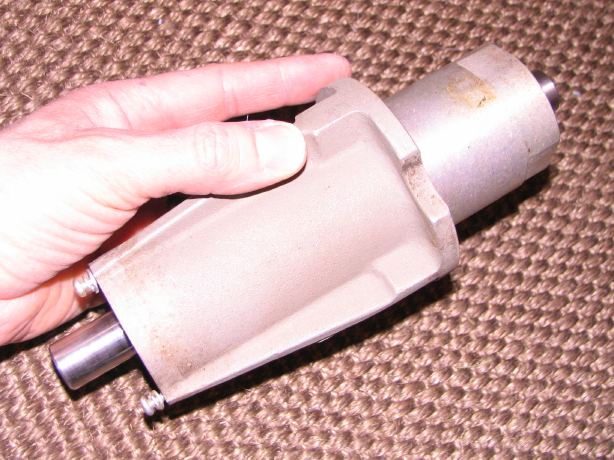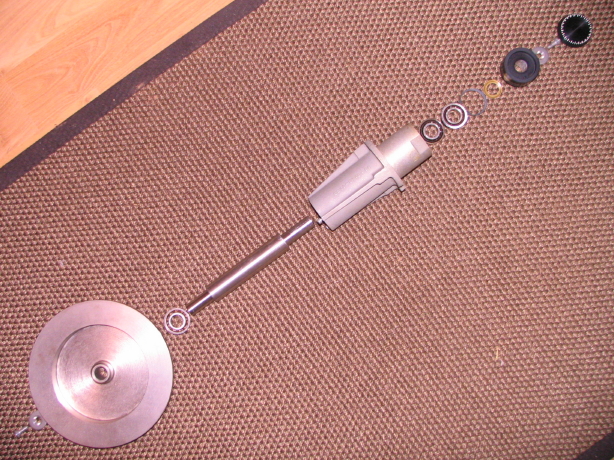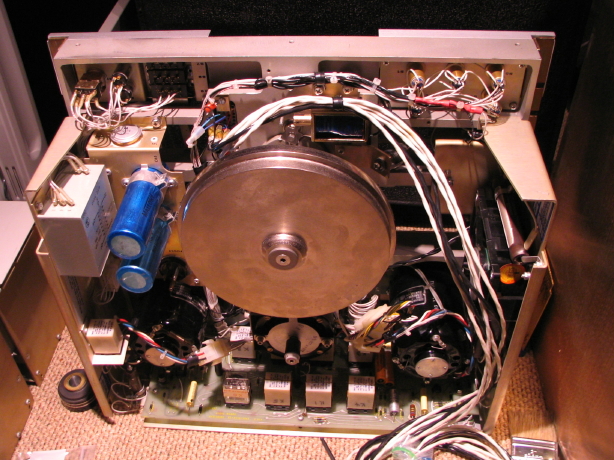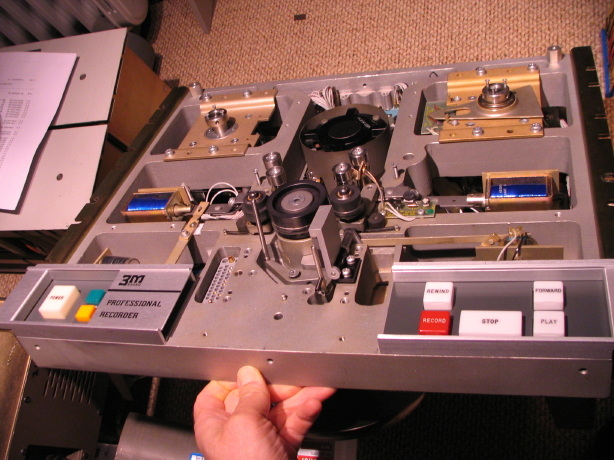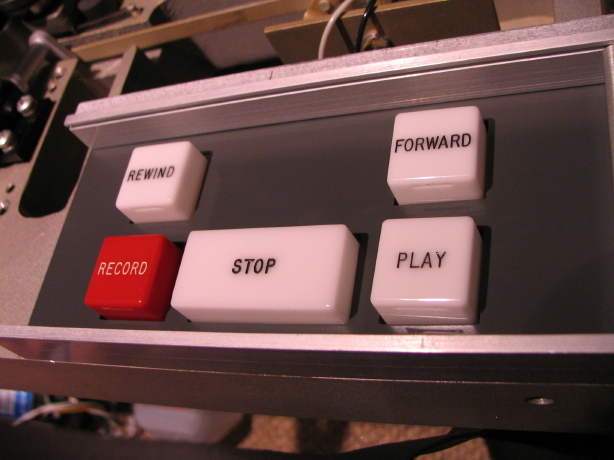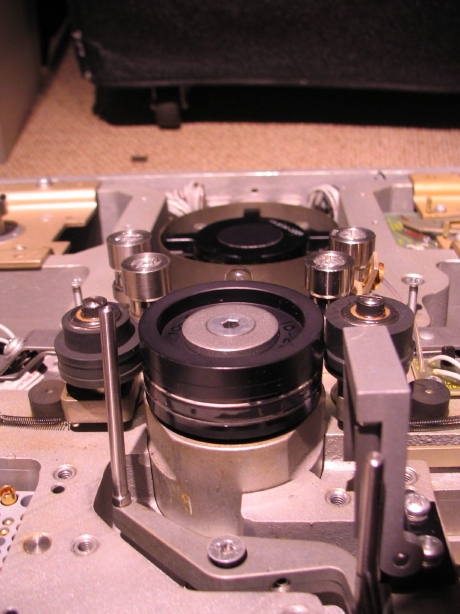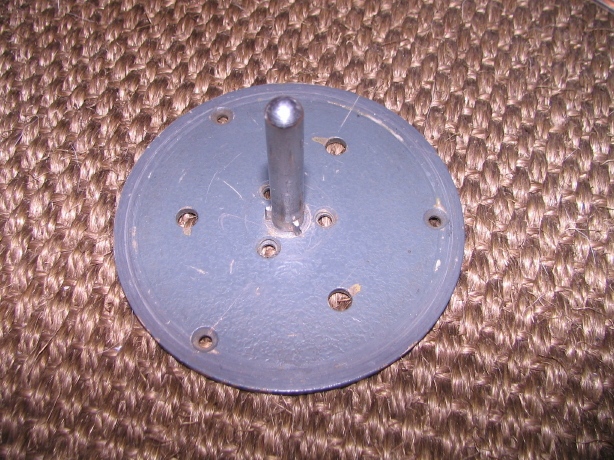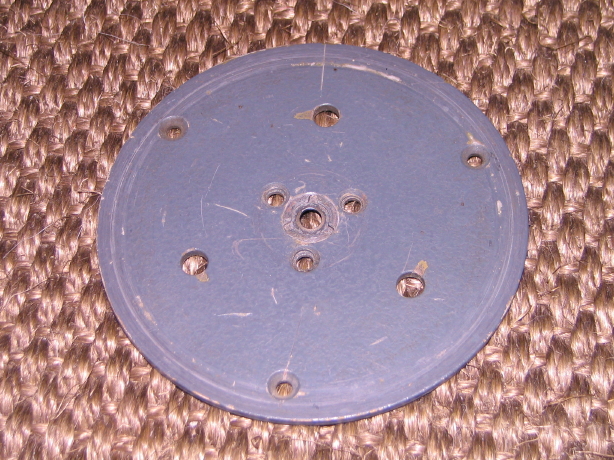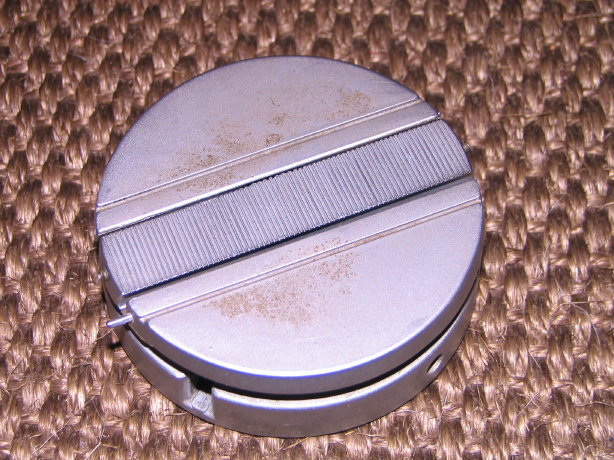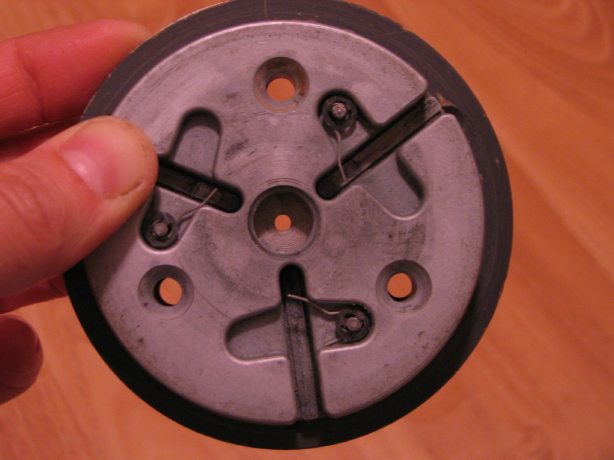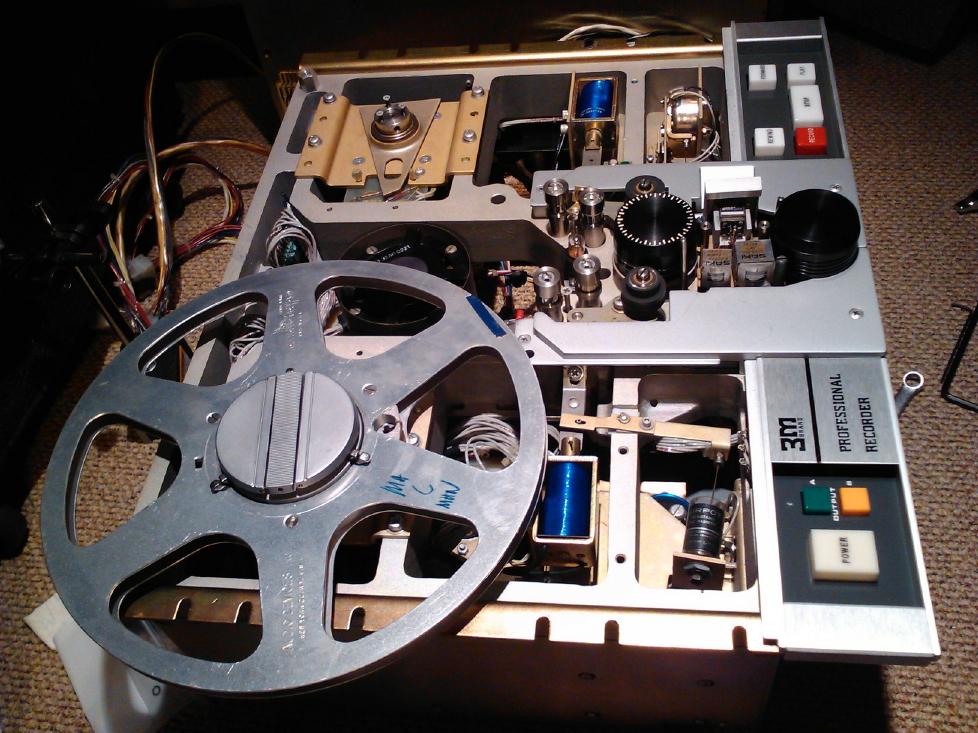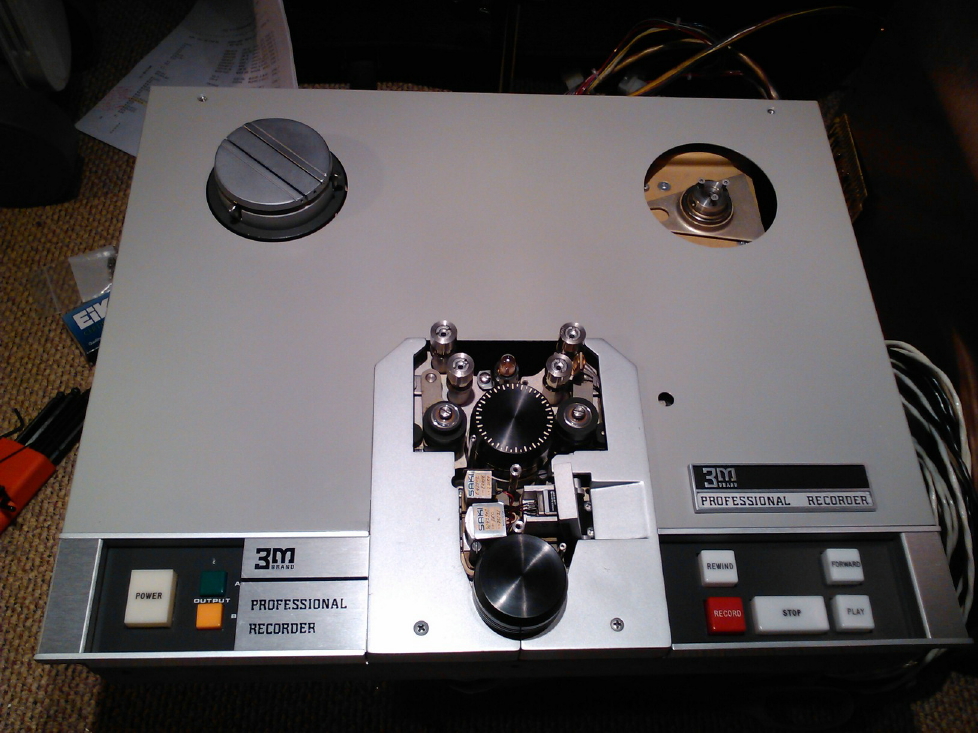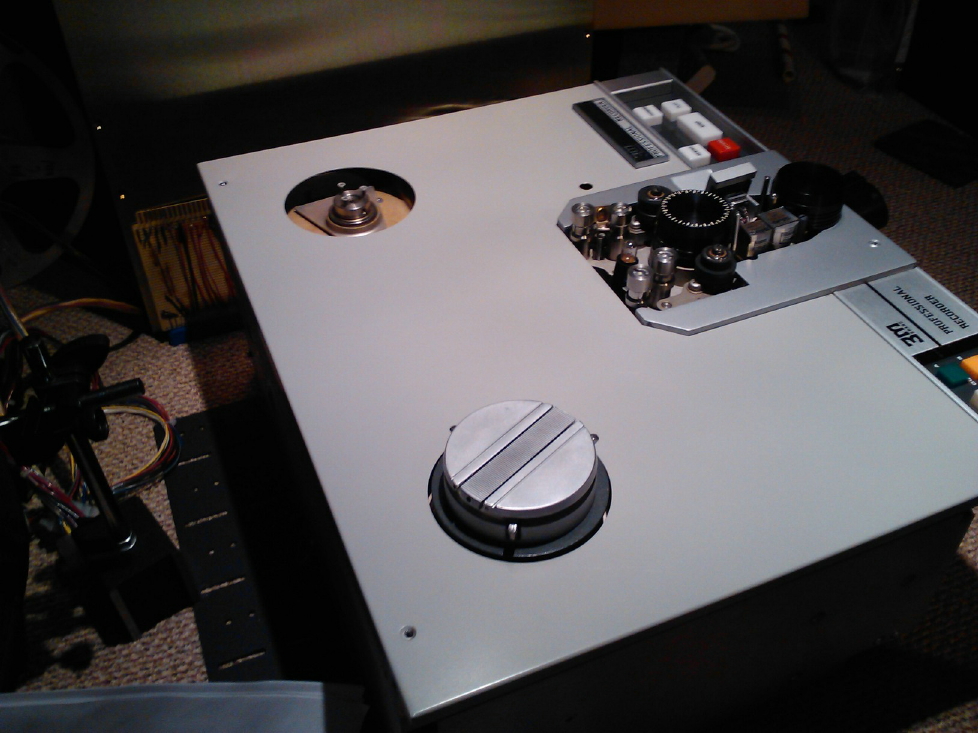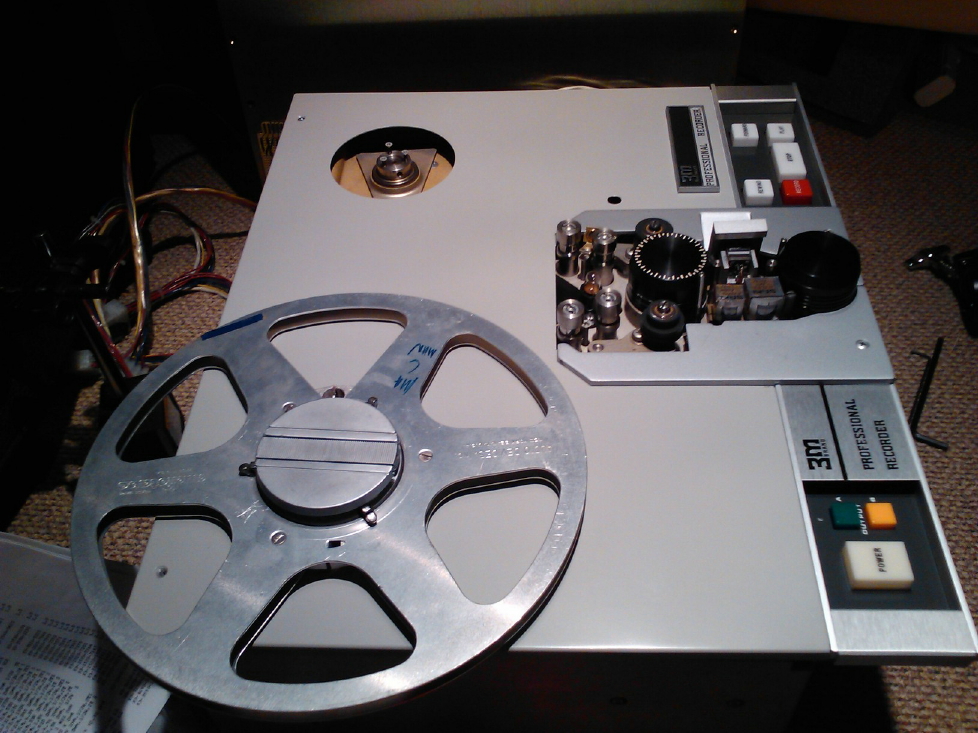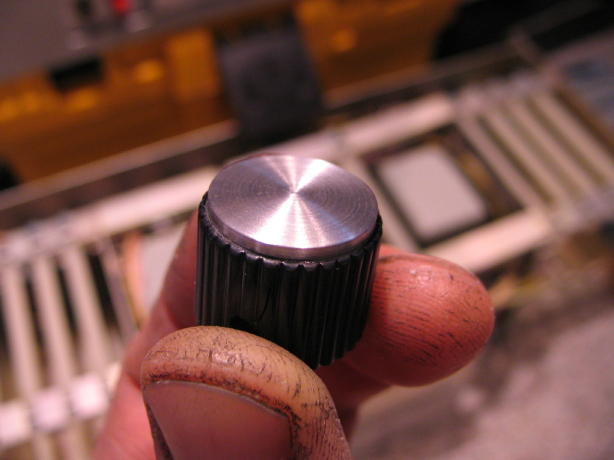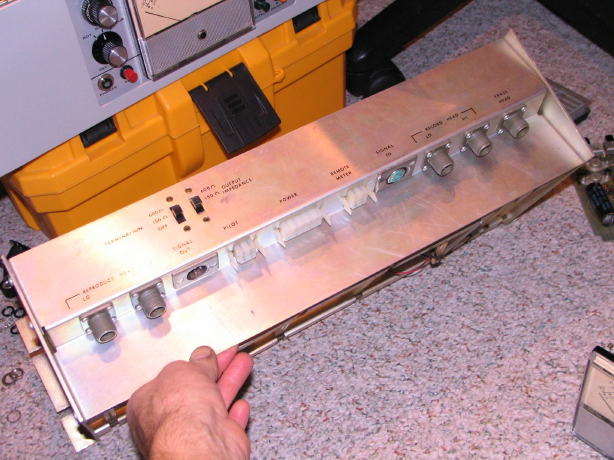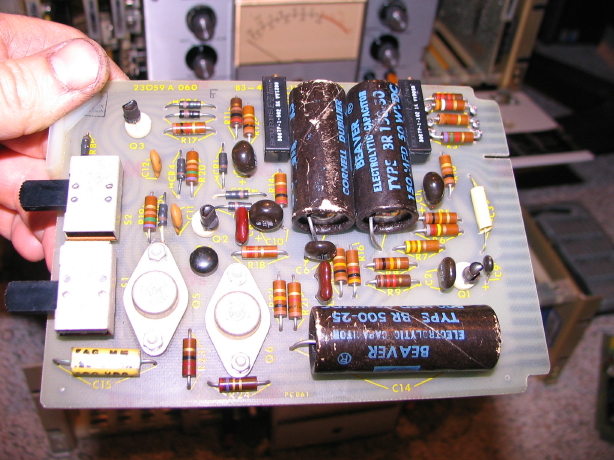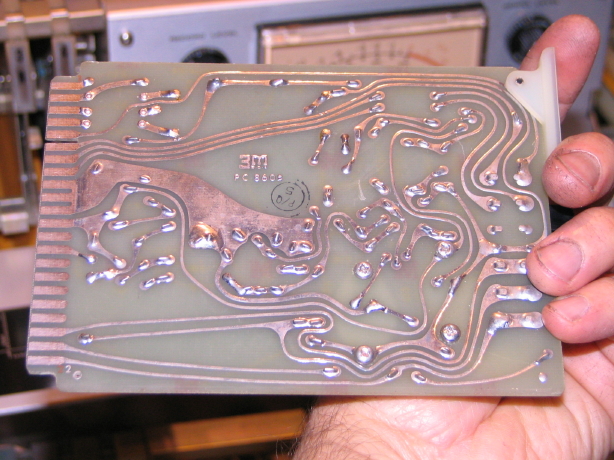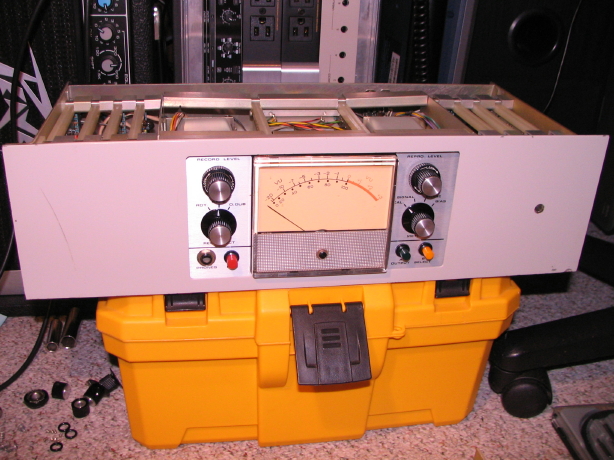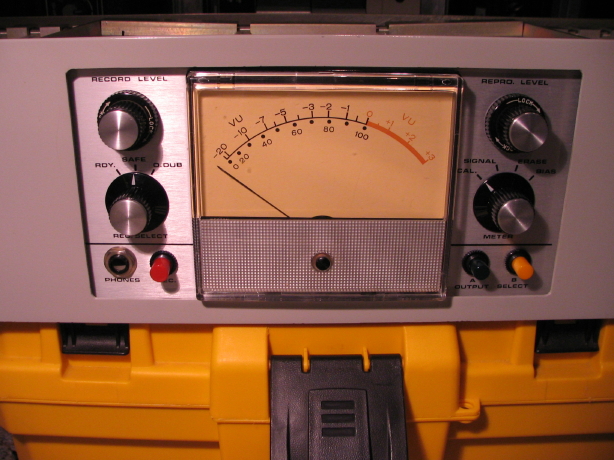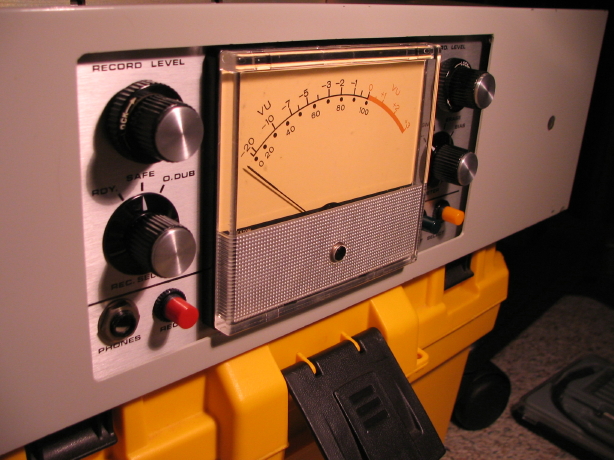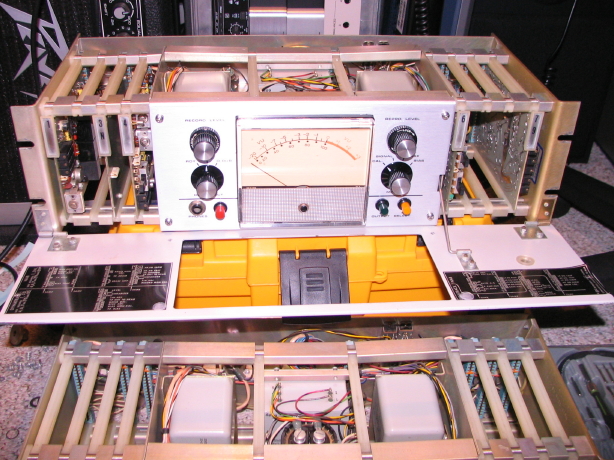Been awhile, but the M64 is in the studio. The transport is juuuuust about ready to try with "shop" tape...just need to mount a couple small covers on the headblock and reinstall the tape sensor.
The other thing I'm in the midst of is cleaning up and inspecting a couple electronics modules. I have five modules total: the two M64 modules that came with the original machine (which is now my parts machine), and three modules that came with the second transport. Two of those three modules are actually from a 4-track M23 machine, and one of them is an M64 module original to the second transport. No idea where the second original module is. The two M64 modules that came with the original machine are *filthy* and configured for console-mounting which means they do not have VU meters on them. On the console-mounted machines the meters fly above the transport, and the place where the meter is normally mounted on the front of the electronics module (which, coincidentally, is the front of the pull-out power supply module for the electronics module) is replaced by a steel plate with a little drawer pull on it (making it easy to pull the power supply out if needed). Ultimately I'd like to have a custom 3U panel made up by
Front Panel Express to rack-mount a pair of meters up by the transport. They did an awesome job making some custom panels for the
patchfield modules on my MCI JH-416A desk, so I'll be a return customer for them.

ANYway, my point here is that the two module that came with the original transport are filthy and without meters, and the only other pair of modules I have are the set from the M23 and fortunately they have meters. The differences between the M23, M56 (1" 8-track) and M64 modules are very minor...I think just some minor component differences on some of the amp cards, but the cards are all interchangeable, so away I go to mating up the M23 modules with my M64 transport. Oddly enough the M56 and M64 modules are finished in a dark grey, while the M23 modules are finished in a putty color that actually matches the dress panel on the M23, M56 and M64 transports. Go figure.
So I've been busy cleaning up and inspecting these two M23 modules. They needed very little. I did some disassembly, got out the window cleaner, iso alcohol, shop vac, toothbrush and various rags and my TR3 polish...the usual regimen. I replaced the screws that mount the control panel to the module frame with stainless screws and washers and found a way to chuck the knobs onto my drill motor so I could polish up the aluminum knob caps. Now mind you these aren't aluminum lookin' stickers...or even little circles stamped out of 16ga aluminum sheet. These are honest-to-goodness aluminum discs actually turned out of aluminum rod...I can see that these were actually machined...its awesome:
So I got all that stuff cleaned up and in the process was just re-impressed with how 3M designed and put this stuff together. Same thing with the transport...the degree of over-engineering is akin to my Ampex stuff, but the engineering of the layout and assembly of components is, IMO, a cut above.
Here is that power supply for the module...this power supply provides filtration and regulation for one channel of electronics, is all discrete and is of plug-in design via a card-edge connector. Its assembled using good ol' threaded fasteners...no spot welds or rivets. Need to take it apart completely? Get out a simple #2 phillips screwdriver.
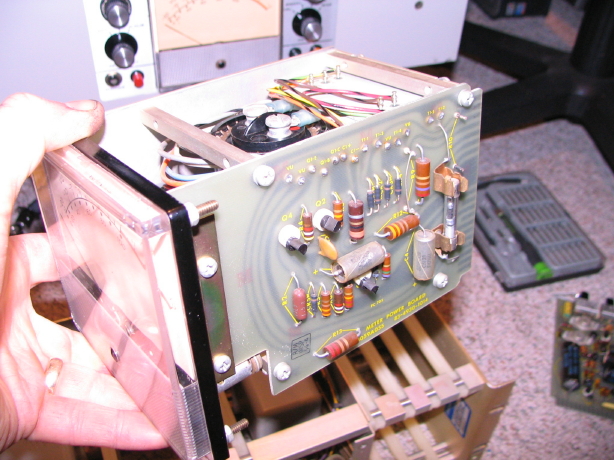
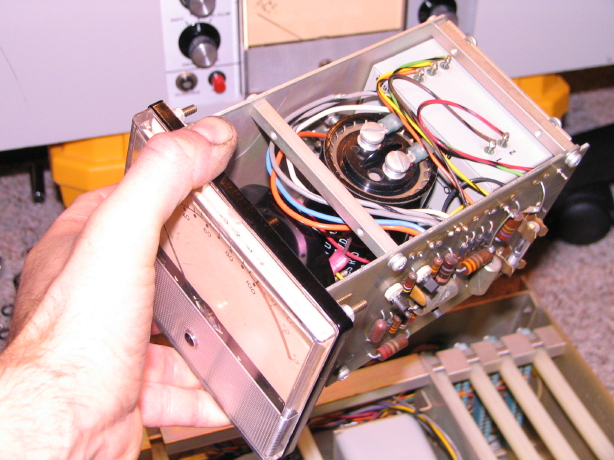
Here is the naked electronics module chassis with the cards, power supply and control panel removed. Notice that the sides are connected together via steel rods with extruded aluminum spacers in between each set of card slots...totally modular. If this chassis needed to be reconfigured for a different number of slots, you remove on end panel and slide the parts off like a shishkabob and slide the new stuff on. As it stands the module has 8 cards slots. Not all are used. Some are empty slots and then there are some slots for the 3M Dynatrack system. I won't go into detail, but if you aren't awware of what the Dynatrack system is it was/is a unique approach to noise reduction and dynamics processing using multiple tracks (i.e. a 2-track machine would use 4-track heads and 4 electronics modules) with differing operating levels and discrete auto-fading between the tracks. Anyway, here is the chassis:
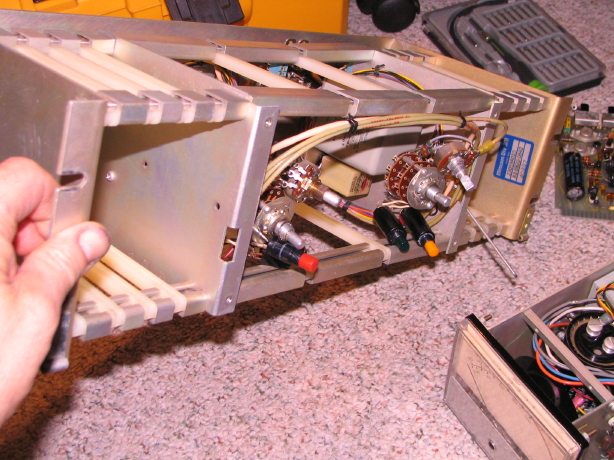
And I love what they did as far as mounting the connections on the back...they are angled facing down to avoid dust and dirt getting into the connections and this also avoids potential damage from connectors protruding out the back of the module:
And I still can't get over the size of the input and output transformers. Now let's please keep in mind that transformer coupling doesn't make the sound "better"...it alllllll depends on what is "better" to you. If you're Jim Williams, then "better" is total neutrality...input=output. Others like the distortion and non-linearites that transformer-coupling can add...the color. These transformers have a lot of metal in them. Juuuuust lookit...they're hyooge:
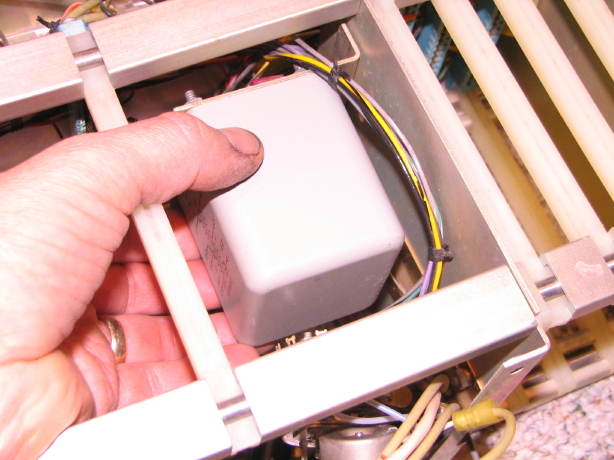
And this is a fun tidbit...I've been having some dialog with a couple folks regarding recapping of the amp cards. One of those folks is Dale Manquen which is awesome because he designed this stuff. Anyway, most of the dialog has been over the output amplifier card. Dale said the circuit was borrowed from a "Fairchild application note on designing a quasi-complementary power amp". Dale said that, back in the mid 60's, he drove his 16 ohm 15" JBL's directly off the card. Crazy. Anyway, this is the card I'm talking about, and yes the old "Beaver" branded caps have got to go!
Here is one of the modules cleaned up. Wish I was adept at repainting stuff as the scratches in the front panel really detract from the overall condition, and unfortunately the replacement image sensor on the point-and-shoot camera I was using coupled with the built-in flash makes for terrible pics, but they're better than nothing:
Here is a short youtube video I shot going over a lot of the same stuff I just covered above as far as the construction of the modules:
YouTube
So pretty quick here I'll actually get the modules racked up, cross-connect them with the transport and try powering everything up (after I build a simple manual soft-start circuit...not taking any chances with this first power up...dunno how long its been since these modules have seen power). Then there's a couple things to check on the transport but after that I'll try threading up some "shop" tape and take it for a spin!
